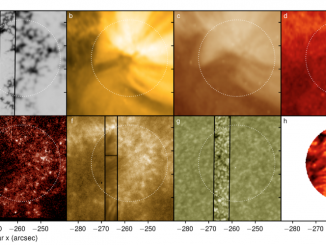The multi-thermal chromosphere: inversions of ALMA and IRIS data
by J. M. da Silva Santos et al.
Observations in the ultraviolet (UV) taken with the Interface Region Imaging Spectrograph (IRIS) have shown that the bright magnetic patches, known as plage, typically feature broader and brighter MgII h and k lines, which suggests that the chromosphere above plage is hotter and denser than in the quiet-Sun (e.g., Carlsson et al. 2015). However, not all line broadening is thermal; a nonthermal broadening component of up to 10 km s$^{-1}$ […]


